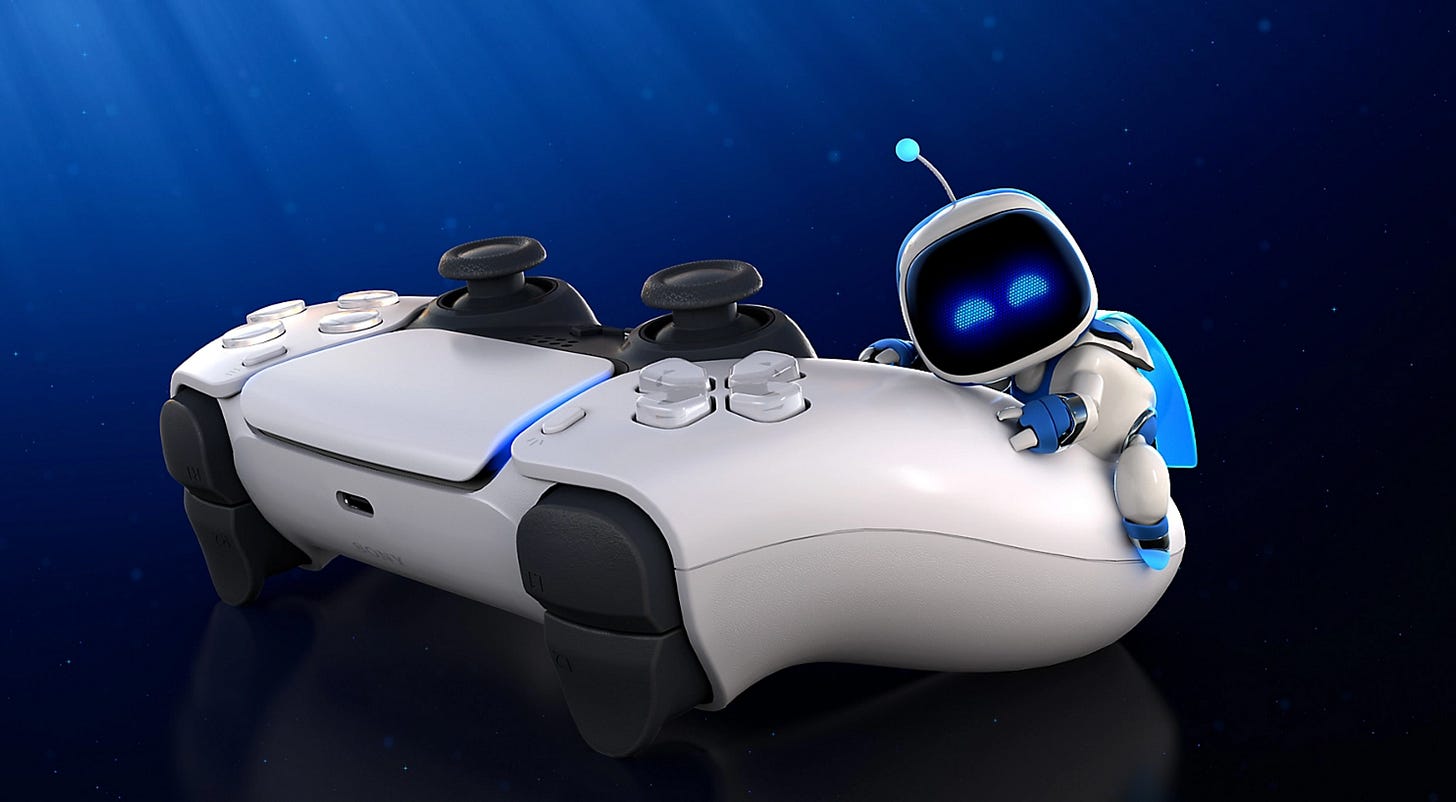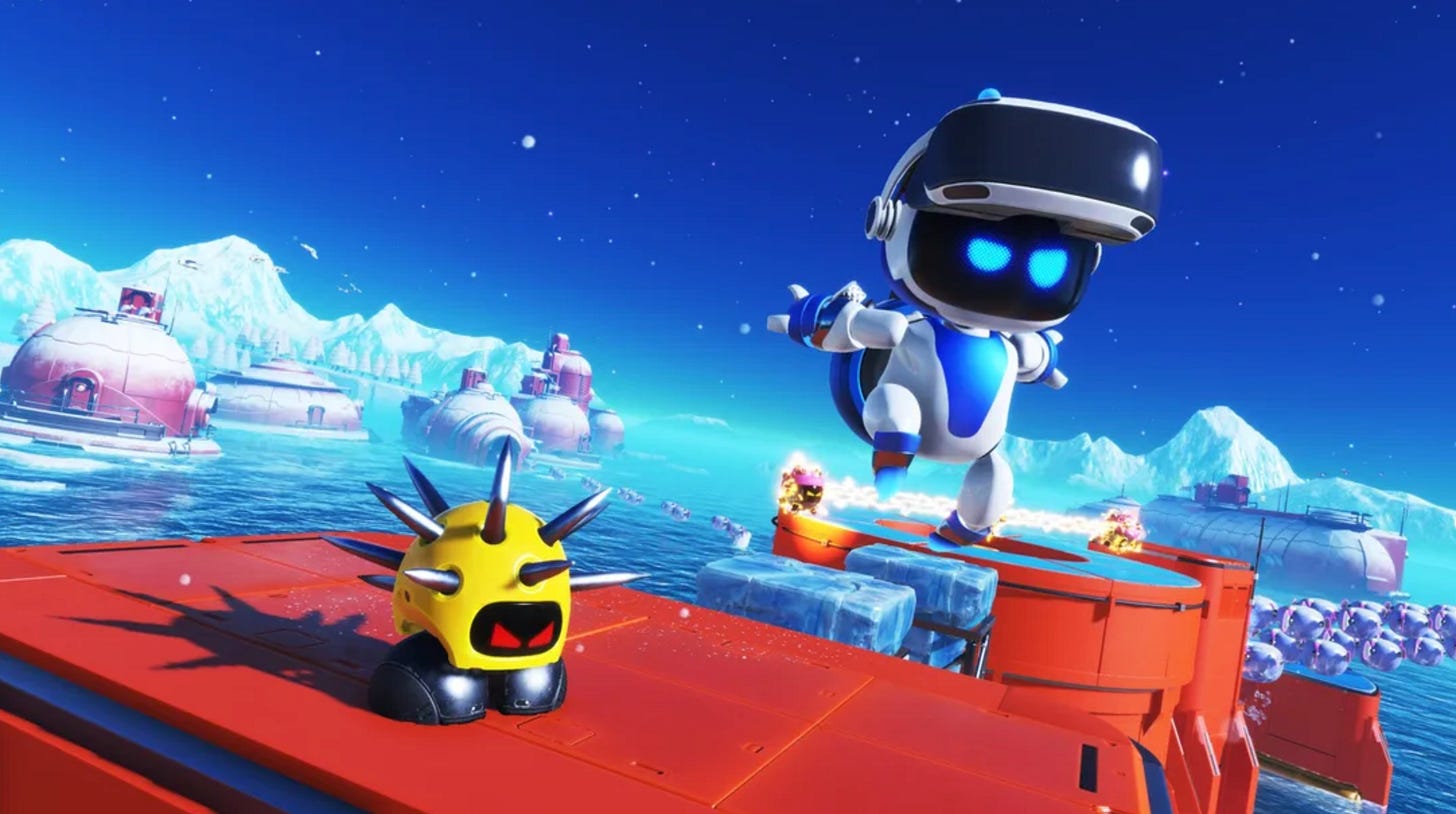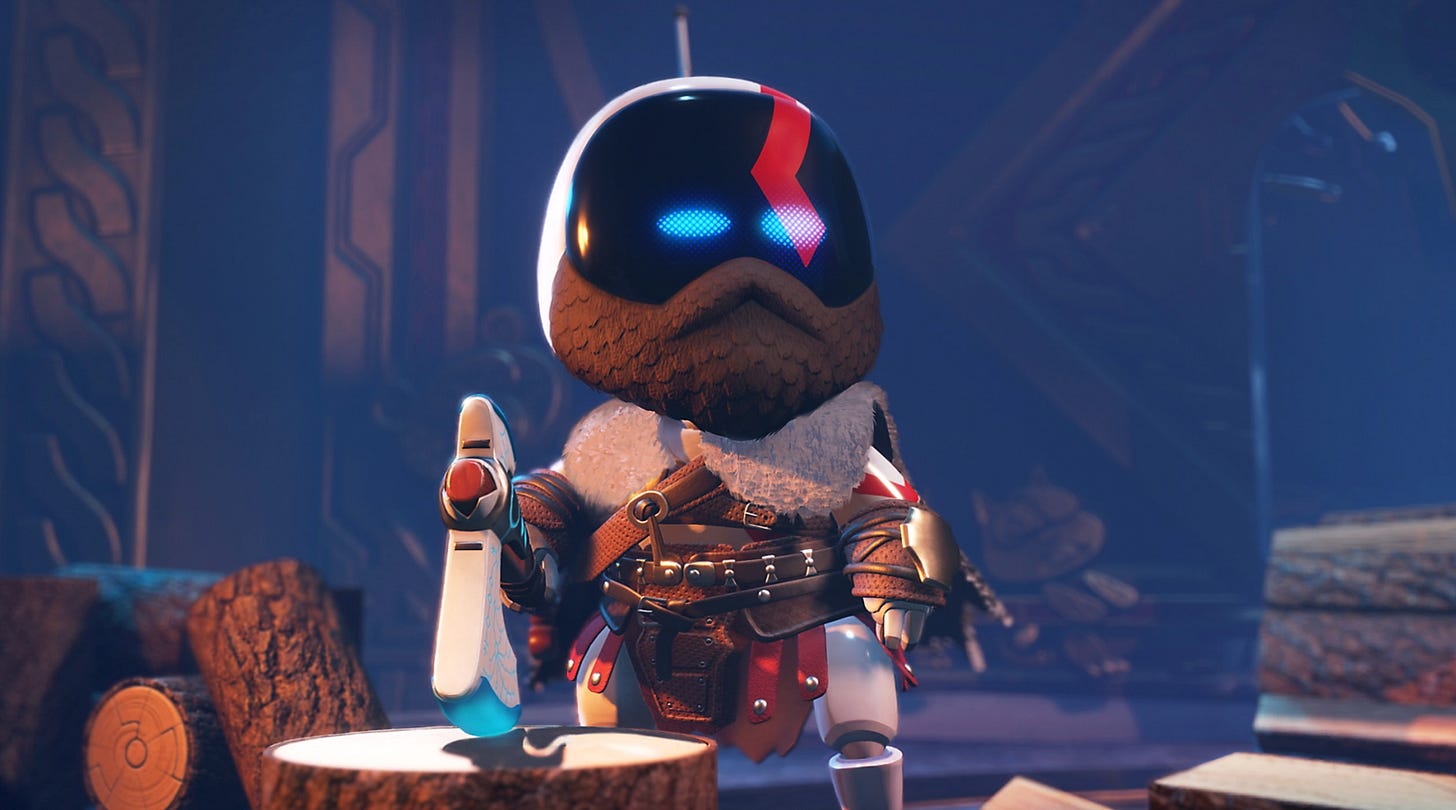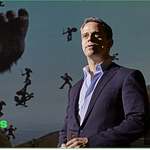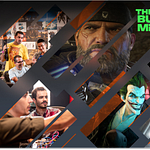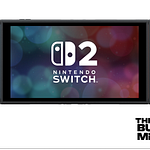Listen now on Apple, Spotify or YouTube
In This Edition
Team Asobi’s Nicolas Doucet on…
- Pushing consoles forward
- PC vs console
- Making Astro Bot fast
- Building family games
Why should someone upgrade from one console generation to the next?
In the past, the answers to that question were obvious. New consoles delivered noticeably better graphics, and developers were able to create bigger, deeper experiences that were not possible before.
But today, those generational leaps look more like incremental improvements. Developers are also expected to make games for a variety of devices, including older and less powerful machines, which makes it tricky to fully capitalise on the latest tech.
Meanwhile player habits have shifted. The most popular games on consoles today are Fortnite, Call of Duty, Roblox, GTA 5, EA Sports FC, Minecraft and Rocket League. These are all games that run perfectly fine on older devices.
Five years into the console cycle, and the PS5’s biggest competitor remains the PS4.
So, I’ll ask again, why should someone upgrade?
One developer at the forefront of answering that question (at least for PlayStation players) is Team Asobi. The Japanese studio developed the excellent PS5 tech demo Astro’s Playroom, which was a showcase for what the PS5 DualSense controller can do. Then last year, it released the multi-award-winning platformer Astro Bot, which was a similar showcase of PS5’s capabilities.
“When you put graphics side-by-side between an end-of-lifecycle PS4 game and early cycle PS5 game, you could argue, to an untrained eye, that it’s hard to see the difference,” admits Team Asobi studio director Nicolas Doucet.
“But early on [with PS5] we got the DualSense prototypes, with this haptic feedback and adaptive triggers. And we tried to understand what could be different about having this kind of trigger, so you can simulate pulling something, or cracking something, or crushing something... We tested all of that.
“When you’ve gone through [that process], you get to appreciate the changes. There are some leaps, but they’re maybe less obvious than when we went to HD graphics. That’s something that you can just stare at the screen for a few seconds and understand. With the controller, you have to get it in your hands and get a feel for it.
“But I do think the PS5, between the DualSense and the SSD, really brought something special. With the SSD… I’m thinking of things like the Souls games, where you die a lot. And when you die, you used to have to wait a long time before you get a second try. With the SSD, that becomes really, really fast. So, in terms of just the pleasure of play, that’s really increased.”
“There are some leaps, but they’re maybe less obvious than when we went to HD graphics. That’s something that you can just stare at the screen for a few seconds and understand”
Team Asobi isn’t just the maker of PS5 games. The studio is situated near the PlayStation platform team, the engineers that are building the next generation of PlayStation technology, and the studio plays a lead role in testing new prototypes.
“Sometimes those prototypes have features or functions they’re not sure about, but maybe someone in one studio thought it’d be nice to try,” Doucet explains. “So, they quickly mock up a version of it, they come to us, and we make the demos. Sometimes it takes a week, sometimes two, and then we invite them to see. We pretty much speak to them every week.
“We talk about game creators, but we don’t really talk about the people behind the hardware. Those guys are really amazing because when they decide to put haptic feedback or adaptive triggers on the table, they’re not sure what the application will be, but they have a hunch that it is going to lead somewhere. And we are just grabbing those opportunities and running with them.”
The challenge around making the most of functionality like the SSD or the DualSense, is the increasing need to make games for multiple devices. PlayStation is releasing more of its games on PC, for example. Is that causing developers to be more circumspect when it comes to using PS5-specific features?
“In our case, no,” Doucet answers. “We really focus on PS5. We want to take full advantage of the DualSense and SSD. There is always a way to cross bridges if we ever need it. But really, the main focus is on the PlayStation console.”
When it comes to consoles vs PC, Doucet says there is one big advantage to making something only for PlayStation.
“It’s specific hardware that is absolutely set. You know that what you see in your office making the game, is definitely what people will see in their home playing the game. That allows us to focus, because you’re not putting in time dealing with compatibility or permutations. It’s why I’ve always liked consoles.
“[In the past] PC permutations were much greater than they are today. Compatibility used to be a real nightmare. Today, it’s more unified. But I’ve always preferred to be on the console side, because it’s all about just plug and play.”
Team Asobi is a first-party PlayStation studio, and – like other internal teams – feels a responsibility to showcase what a PlayStation machine can do. However, that doesn’t mean forcing every unique feature into every game.
“We want PlayStation to stand out. We want it to have a differentiator,” Doucet says.
“[But] there is a time and a place to do it. Sometimes, if you do too much of it, the game might feel gimmicky or forced. Astro’s Playroom and Astro Bot had a slightly different philosophy. Astro’s Playroom was a showcase game that was supposed to show all the cool things that the controller can do. We really used every single feature. But when we made Astro Bot, we took a different philosophy. We thought we are only going to [include a feature] when it’s really adding to the experience. We continued being innovative, but we were never going to do it at the expense of the core game.”
Team Asobi didn’t worry about Astro Bot’s length
Astro Bot was made in three years by a core team of around 65 people. As a 3D platform game aimed at younger players, it was never going to deliver the sales of Spider-Man or The Last of Us. Therefore, it was prudent for Team Asobi to keep its team small and its development schedule tight.
Despite the restrictions, Astro Bot was a critical triumph. It topped Metacritic for 2024 and won numerous awards, including Game of the Year at The Game Awards. So how did Team Asobi manage to deliver an impressive AAA game in such a short timeframe with a relatively small team?
“It comes down to the sum of lots of small things carefully created,” Doucet says. “At no point did we imagine that we would end up with a game that could stand in the spotlight like it did. But every couple of weeks, we had these sessions where we create something and then we review it and jump onto things that went right. It’s that continuation of carefully fixing little things.”
The way the team worked involved gameplay engineers build out a prototype, without much (if any) input from other members of the team.
“If you give control to one single person over the feeling, and even the look, of one piece, and get that really right, once you bring in modellers, animators, FX people and audio people, you are working from a very strong base. And it’s much more likely that you’re going to go in a straight line and not have to do big costly reworks. That’s one of the reasons why a small team can do a lot of content.”
However, ‘a lot of content’ doesn’t necessarily mean a long game.
“Of course, there is a minimum scope that you need in order to call it a full game. But it was never an obsession that we should have X number of hours, or being worried of that comparison. It’s a normal bias to feel that ‘more is better’. You see a lot of that in society. But the first thing that’s really important is that we should not spread ourselves thin and start doing lots of things that we can’t do well.”
“The first thing that’s really important is that we should not spread ourselves thin and start doing lots of things that we can’t do well”
He continues: “We use the analogy of food. When you’re really hungry, if I propose to go to a buffet, you can eat anything you like and that’s going to sound appealing. But as you go through that meal, maybe by the end of it you’ve eaten too much and you almost regret it and you don’t necessarily appreciate what’s left, and maybe you keep a lukewarm memory of it.
“Whereas if we go to a place where it’s going to be just enough, you’re going to keep a good memory and maybe you want more. The way we think of it is to not overload the player so that in the end they feel fed up.”
It’s not just about the length of the game, but also making sure individual levels don’t outstay their welcome, either.
“We learned that from one of our previous games in VR,” Doucet says. “Three quarters through the game, we had this really long level. It was quite stressful, it was difficult, and it was just tense. We realized a lot of people dropped at that point, which is a shame because they were almost at the end.”
Team Asobi: We don’t make games for ourselves
There was a time when Nicolas Doucet wanted to make games he liked to play.
He remembers creating LEGO titles in his 20s, which was a job he took so he could return to London. He wasn’t interested in LEGO, and wasn’t entirely satisfied with the work.
When he got a role at PlayStation, he imagined he’d be making things like Wipeout. But instead, he found himself working on SingStar, EyeToy and Buzz… once again, creating games for an audience that wasn’t him. Yet this soon became a calling.
“It felt like, ‘ok, there are these amazing teams making God of War and Uncharted. We can’t do these kinds of games. But here we have an opportunity to do something different’,” Doucet recalls. “And the challenges weren’t so much graphical challenges or story challenges, it was about getting people interested. People who would normally walk past video games and think it’s not for them. At that point, I started appreciating my career. When I came over to Japan, it was 2011, it was no longer a choice by default, it was a conscious choice and I am enjoying doing things for this audience.”
“We are not here to please ourselves We are here in service of the audience”
Doucet concludes: “We are not here to please ourselves We are here in service of the audience. We at Team Asobi are all hardcore gamers, but we ended up making family games. The games that we love and the games that we make, there is actually a separation. Even though, of course, we love our job.
“We are not tech guys making games for people like us. And what I love about it is that there’s an act of… generosity in there, which I really enjoy. We enjoy playing certain games, but we put our brain to the service of a different type of game for a different audience. I think it’s more fun to do that than to do something you are used to doing.”
That’s it for today’s edition of The Game Business. Join us on Thursday where we’ll be discussing US game sales and the return of GDC.



